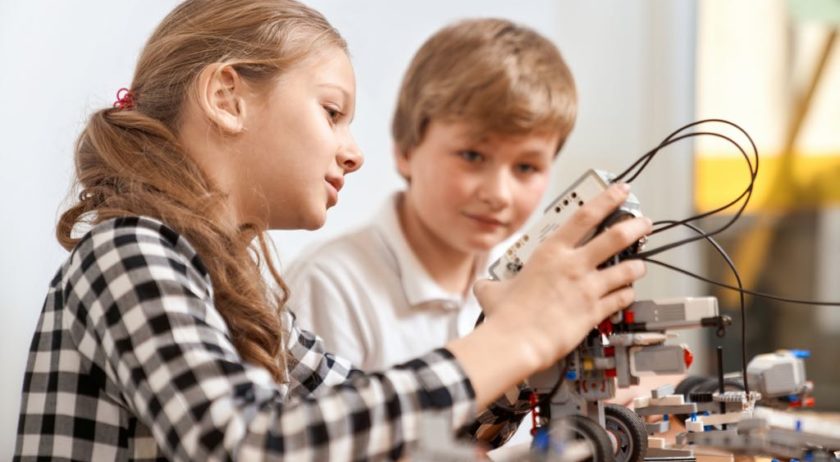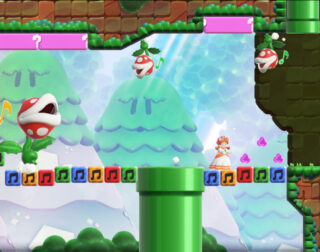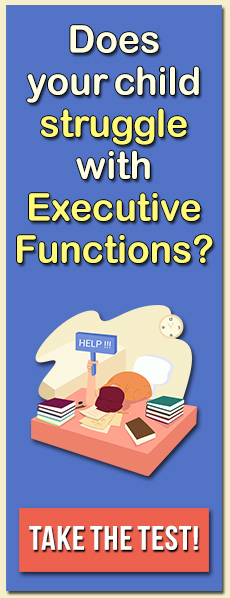LearningWorks for Kids is based on the premise that children learn from playing video games. This isn’t the wish of a 10-year-old arguing with his parents to let him play more Minecraft but is based on decades of psychological research that connects play to learning. One of the core ways that human and animal children learn is from their play. Video games and other forms of digital play are more complex than traditional play, and neuroscientists have discovered that this type of complexity leads to even broader and more in-depth learning. This type of learning is not limited to academic knowledge or getting better at gameplay but can be helpful in developing executive-functioning and social-emotional learning skills.
Unfortunately, many kids who practice and master tools such as planning, prioritization, flexibility, and organization in screen-based gameplay don’t readily transfer these skills to day-to-day problem-solving. Because of their focus, engagement, and persistence, they might be great at the decision-making and critical thinking needed in gameplay, but tasks such as finding and completing homework, getting ready for school in the morning, or studying for a big test seems beyond their capabilities. Why is this the case?
The difficulty occurs while generalizing learning from games to real-world skills. Transferring skills learned in one setting to another is always difficult. Imagine trying to learn to hit a tennis forehand just by watching tennis instructional videos as opposed to playing a virtual tennis game where you swing a facsimile of a racket and get feedback. Or, finally, having a real-life tennis lesson where a coach feeds you balls to hit your forehand. Most likely you’d transfer the skills from your live tennis lessons best to an actual tennis match. Psychologists refer to the link between the tennis lessons and using the skill in a game as “near” transfer, where the task is to apply what one has learned in a setting similar or “nearly” like it.
Learning real-world skills from playing games is more difficult because most gameplay does not involve real-world activities. The activities of the gameplay may be too dissimilar for easily leading to real-world skills without explicit instruction. This is called far transfer and is defined as applying what one has learned in a setting that is “far” different from the first setting. Just as playing chess or monopoly alone may not lead directly to developing good planning skills, doing something “nearer” to a real-world application, such as planning and building a fort, might result in better learning.
Widget not in any sidebars
It might seem as if I am arguing against using video games and other screen-based technologies to teach executive-functioning and social-emotional learning skills, but I am not. There are compelling data that suggest that some game-based executive-functioning and social-emotional learning skills are transferred to the real world. And when we involve teachers, mediators, and strategic teaching principles such as metacognition training, the transfer is amplified. Perhaps most importantly, games and screen-based technologies afford us the full attention, persistence, and motivation of the learners. It’s the difference between telling a group of fourth-graders that you are going to read a textbook to learn planning skills as opposed to playing a popular video game that is really fun. Which do you think would work better?
In our LW4K LIVE classes, we use engaging gameplay to identify, practice, think about, and learn how and where to apply executive-functioning and social-emotional learning skills to the real world. We teach and encourage kids to get better at their gameplay so they can have fun but, more importantly, understand how they are using cognitive and problem-solving skills they can later apply to the real world.
If you want to use screen-based technologies to improve the executive-functioning skills of your children or students, you’ll need to do more than give them a game that practices a skill or an app that supports a weak executive function. You’ll need to be involved as a mediator between the game and applying it to real-world situations. To do this, you will need to know how to maximize the transfer of learning. Learning more about some of our LW4K LIVE techniques such as strategic teaching, metacognitive strategies, and generalization would be a great first step. While it may sound complicated, it’s actually fairly intuitive, and this knowledge would help you with many other learning opportunities that are unrelated to the use of games and technology. Please enjoy some of the articles that we have linked to and send us your questions or comments so we can help your kids.
Do Kids Learn From Video Game and Screen Time?
Social-Emotional Learning in Video Games: Finding the Golden Rule





